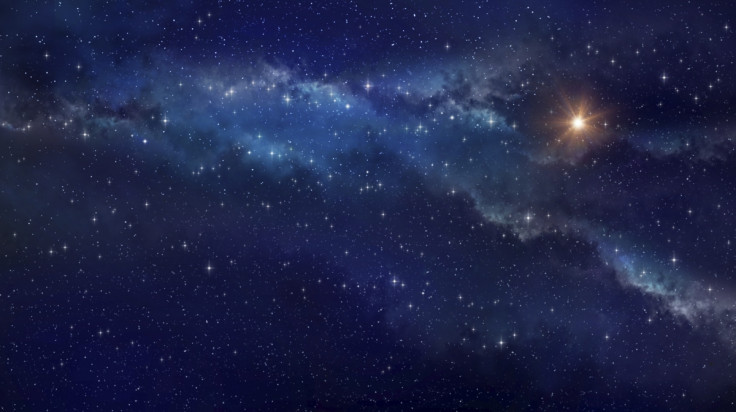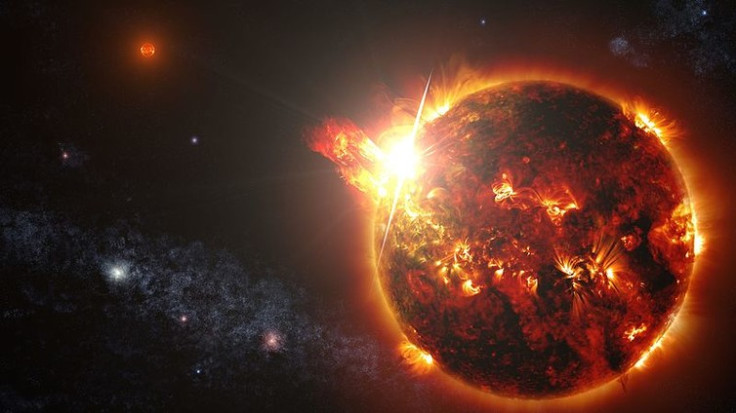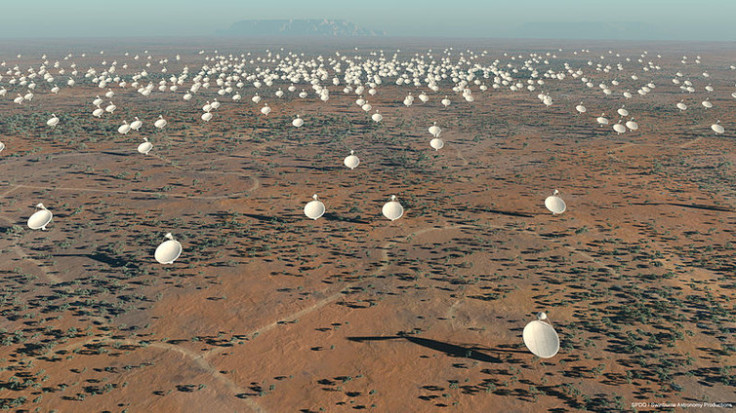Are aliens trying to tell us something? Brightest burst of radio waves detected
Fast radio burst lasted less than half a millisecond and appears to have come from a galaxy over a billion light years away

Carole Mundell, University of Bath
The search for mysterious "fast radio bursts" – very brief but intense pulses of radio waves from outer space – is heating up. Nobody knows what causes these powerful bursts, but some have even speculated that the signals could be transmitted by distant alien civilisations. In fact, astronomers are so perplexed by the phenomenon that it is driving a renaissance in radio astronomy.
Now an international team of astronomers has detected the brightest ever fast radio burst. Dubbed FRB 150807 after its discovery date, the burst of intense radio waves lasted less than half a millisecond – that is 0.1% of the time it takes a human to blink. And the study, published in Science, has come closer than any before it to pinning down where the blip came from. The research comes just days after another study reported having seen a fast radio burst together with an outburst of gamma rays, extremely energetic electromagnetic radiation.
Despite their intensity, the nature and origin of fast radio bursts is still hotly debated. Some astronomers have suggested these brief, intense flashes are flares produced in the atmospheres of certain stars in our own Milky Way galaxy – a process similar to solar flares. Others argue they are caused by cosmic collisions such as a neutron star (a collapsed core of a large star) colliding with a black hole in a distant galaxy, or speculated that they could be alien signals.

The first fast radio burst – the Lorimer burst – was discovered serendipitously by radio astronomers using Australia's Parkes telescope to search for pulsed radio emissions from spinning neutron stars called pulsars. The Lorimer burst remained a curiosity until other fast radio bursts at different positions in the sky were discovered by other telescopes such as the giant Arecibo radio telescope in Puerto Rico and the 100-metre Greenbank dish in the US.
More from IBTimes UK Science:
Autism may have spurred human evolution through logic and detail-based skills
What we know about the mysterious mummy discovered at the temple of Pharaoh Thutmose III
But progress in understanding this enigmatic phenomenon has been slow. This is partly down to the short duration of the bursts, the limited resolution provided by the telescopes and the uncertainty of the sky positions of the bursts. Trying to discover a burst and, at exactly the same time, pinpoint accurately where in the sky it comes from is difficult.
If a radio signal could be backed up by telescopes that are searching for other kinds of electromagnetic radiation (such as X-rays or the kind of "optical light" that we can see), we could measure the distance and understand the physics processes driving these events. If the processes driving these bursts are similar to those responsible for other cosmic explosions, such as gamma ray bursts, astronomers suspect that radiation at other wavelengths is likely to be emitted in the same event that caused the fast radio bursts. But it's proven difficult to catch.
Indirect estimates of distances have been made by measuring how the radio signal is smeared out. This can help infer the amount of material the light has travelled through. From this, the distance of the fast radio burst from Earth can be estimated, using a variety of assumptions such as the amount of matter between us. Such measurements have indicated that the origins of fast radio bursts lie far beyond our galaxy.

Tracing the blip
FRB 150807 is remarkable for its short duration, radio brightness and high degree of linear "polarisation" – a property describing the plane of the vibrations that make up the waves. Combining these properties, the new study suggests that the burst occurred in a galaxy over a billion light years away, identified by the Visible and Infrared Survey Telescope for Astronomy (VISTA) Hemisphere Survey. This is the closest we've ever got to pinpointing where a fast radio burst came from.
The polarisation of light is affected by magnetic fields surrounding it. So knowing that helped the researchers estimate the magnetic properties of the plasma through which the radio waves travelled. Their analysis suggests that there's only negligible magnetisation of plasma close to the burst site. Interestingly, if this is correct, it would rule out strongly magnetised objects such as young neutron stars, magnetars or other objects causing it – favoured models so far.

This study shows that as the small number of recorded fast radio bursts grows and their properties become better known, the exciting prospect of understanding what produces them becomes increasingly feasible. They could also be used to map out the magnetic fields in the universe – something we know little about. The next breakthrough may come with the first detection of a visible counterpart or optical afterglow, from which we can measure an accurate distance.
It may happen sooner than you think, given the other recent study's tantalising report of possibly the first detection of a gamma-rays burst coinciding with a fast radio burst with Nasa's Swift satellite. If the two bursts do indeed come from the same source that would be very exciting – it could mean this source is lot more energetic than we had anticipated.
Analysis of FRB 150807 predicts that these events should not be rare – with 190 occurring across the sky per day. Future facilities such as the Large Synoptic Survey Telescope – which will survey the entire night sky every few days at optical wavelengths and the radio equivalent – and the Square Kilometre Array will revolutionise our view and understanding of these mysterious blips and the violent, ever-changing universe in which they live.
Carole Mundell, Head of Physics, University of Bath
This article was originally published on The Conversation. Read the original article.
© Copyright IBTimes 2025. All rights reserved.





















